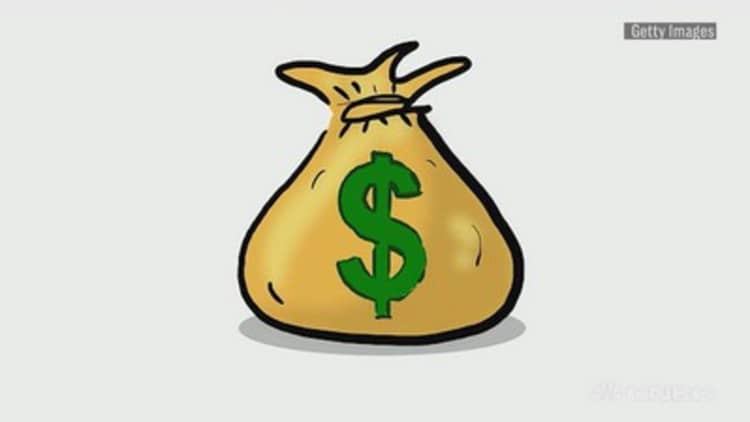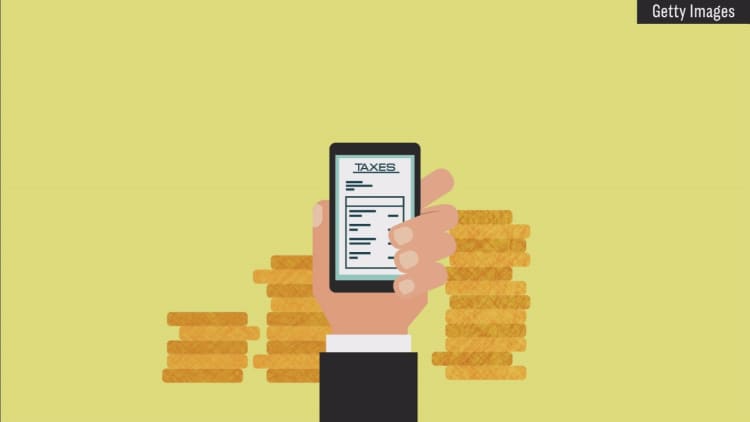
The IRS has launched its new income tax withholding calculator, giving workers guidance on how much they should deduct for these levies under the new law.
Treasury Secretary Steven Mnuchin announced the release of the online tool at a news conference Wednesday.
This is the latest step the tax collection agency is taking to reflect changes stemming from the Tax Cuts and Jobs Act. The new legislation has increased the standard deduction, done away with personal exemptions and trimmed income tax rates.
In January, the Treasury released new withholding tables to give employers and payroll companies guidance on how much they ought to deduct from workers' pay.
"This is really about creating a tool for American taxpayers to double-check their withholding," Mnuchin said of the calculator.
Though the calculator is designed to work for wages, it includes a line that will allow users to input income from self-employment or other nonwage sources.
Check out the new IRS calculator here.
It's a good practice to take a look at your withholding to make sure you're deducting the correct amount of taxes under the new legislation.
"You don't want a big refund, where you're giving an interest-free loan to the government," said Melissa Labant, director of tax policy and advocacy at the American Institute of Certified Public Accountants.
Too much, too little
You likely began seeing changes to your paycheck this month.
Your Form W-4 determines the amount of income tax withheld from your pay based on a number of criteria, including whether your spouse works, whether you have children and whether you itemize.

If you withhold too much, you'll get a refund the following year. Fail to withhold an adequate amount, and you'll owe the taxman (and possibly penalties).
Know your withholding
If you're an employee, your employer gave you a Form W-4 when you were hired, which you can adjust to make sure the right amount of income tax is withheld from your paycheck.
On the form, you'll make note of your spouse, your dependents and your filing status; these are your "personal allowances." The more allowances you have, the less tax will be withheld.
"Some people read the form and think, 'I'm married and have three kids,'" said Cari Weston, director of tax practice and ethics at the American Institute of CPAs. "They end up with five allowances and owe substantial taxes at the end of the year."
Finding certainty
You can use your 2017 tax return to get some idea of how much you ought to withhold this year.
To ensure that you avoid a penalty for underpayment of estimated taxes, you should aim to pay in 2018 at least 100 percent of the prior year's liability, said Jeffrey Levine, CEO and director of financial planning at BluePrint Wealth Alliance in Garden City, New York.
This doesn't mean that you won't owe in April 2019. Rather, it means the IRS won't charge you the penalty and interest next year for coming up short on your taxes.
"If you see your tax rate increase substantially, you might owe a larger amount over the withholding," said Levine. "Aim for that 100 percent: It's a better method of avoiding the underpayment penalty."
Pinpoint your tax load
Here are some suggestions to help you nail the right amount to withhold.
- Review your W-4: Finding a balance for your withholding is based on your salary, your spouse's earnings and the tax bracket you're in.
We're in a year with many changes to the withholding table, plus a reduction in federal income tax rates. You may be taking home a slightly larger paycheck, but you should make sure you aren't withholding too few taxes.
- Talk to your accountant: If you withheld fewer taxes in previous years because you itemized deductions on your return, then it's time for another look at your W-4.
That's because the new law does away with a lot of itemized deductions and places a $10,000 cap on state and local tax deductions.
- Don't play with tax arbitrage: If you withhold less in taxes because you have bigger plans with your paycheck, bear in mind that you'll owe Uncle Sam next year. Don't gamble your cash.
"Some people do foolish things: 'If I invest the money and make 7 percent this year, and I beat the IRS penalty, then I'm ahead,'" said Levine. "If you've deliberately underpaid, the money should go someplace safe because this is a really short-time horizon," he said.
More from Personal Finance:
What the new tax withholding tables mean for your pay
These taxpayers may end up owing the IRS more in 2019
Here's why a big tax refund isn't always good news
WATCH: These deductions are about to disappear



